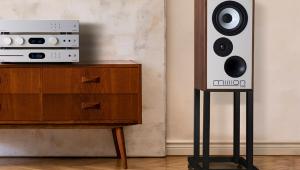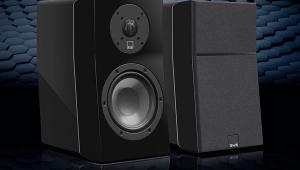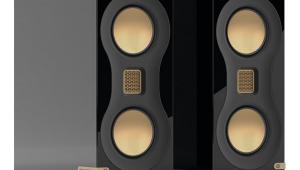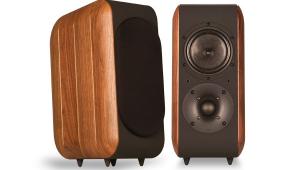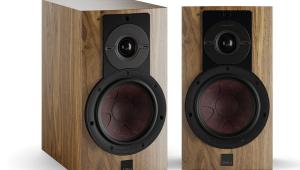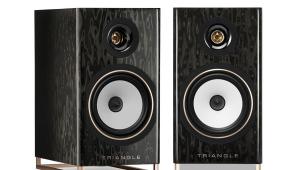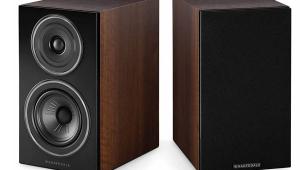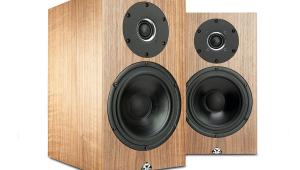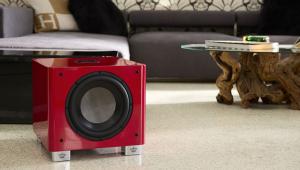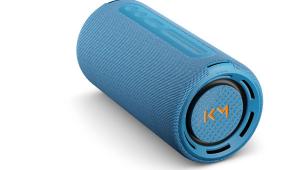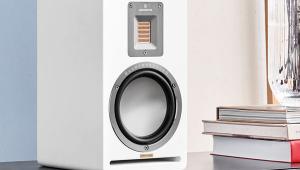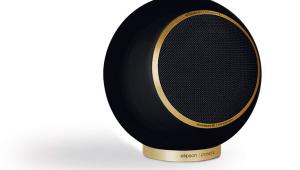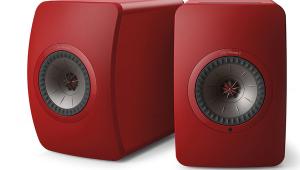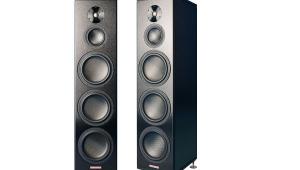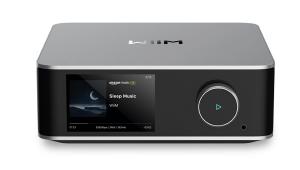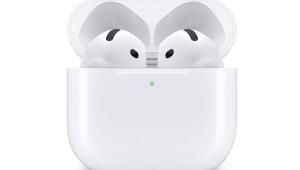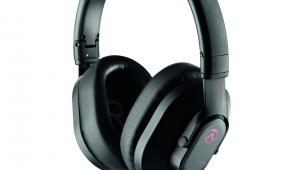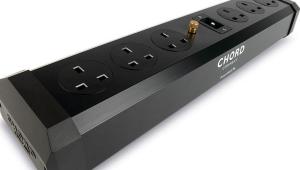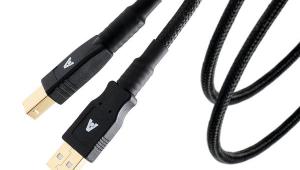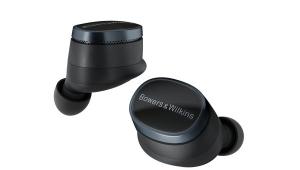JBL 4349
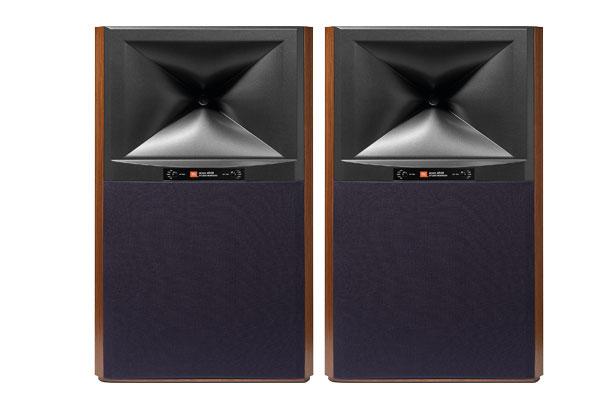
 “Don’t look back in anger” a certain Gallagher brother once sang and who better to exhort the benefit of the past than JBL? Though the American speaker specialist might be more commonly associated with thoroughly modern fare like portable Bluetooth speakers and headphones on the high street, there’s no doubt the past has been a rich source of inspiration for its loudspeaker output of late. With a 75-year history to draw upon, it’s not exactly surprising, and if our L82 Classic review (HFC 473) is anything to go by, looking back has proved a fruitful starting point for its speakers.
“Don’t look back in anger” a certain Gallagher brother once sang and who better to exhort the benefit of the past than JBL? Though the American speaker specialist might be more commonly associated with thoroughly modern fare like portable Bluetooth speakers and headphones on the high street, there’s no doubt the past has been a rich source of inspiration for its loudspeaker output of late. With a 75-year history to draw upon, it’s not exactly surprising, and if our L82 Classic review (HFC 473) is anything to go by, looking back has proved a fruitful starting point for its speakers.
Though not a member of the aforementioned Classic range, the 4349 bears many of the same retro hallmarks. It is in fact the most recent addition to the company’s seven-strong Studio Monitor Series, which starts with the £1,500 4306 bookshelf and goes all the way up to £12,000 4367 floorstander. JBL prosaically describes the range as offering the: “same exceptional dynamics and accuracy that producers and engineers employ in leading studios”.
The first thing to note about the 4349 is its size – it’s big, real big. Though it’s ironically described by JBL as a ‘compact monitor’, at 74cm tall it couldn’t be less compact if it tried and weighing in at 38kg it’s not the sort of thing you’ll be wanting to stick up on a shelf – unless of course you have a desire to hear it come crashing down again in the middle of the night. All of which makes investment in dedicated stands pretty much a necessity. JBL of course provides a solution in the shape of the open-frame JS-120, which tilts the cabinet back towards the listener and means you’ll need to budget for an additional £320.
The top of the cabinet is dominated by the High Definition Imaging (HDI) horn that has come to be recognised as something of a brand speciality. Barely visible at its centre, mounted with a phase plug behind a protective mesh grille sits the D2415K high-frequency driver – the D standing for dual as it combines two 38mm ring diaphragms constructed from Teonex polymer, a pair of voice coils and two motors. Beneath the horn behind the removable material grille sits the bass driver in a natty legacy blue baffle with a pair of reflex bass ports underneath. This has a 300mm cast frame with a lightweight but rigid Pure-Pulp paper cone and 76mm voice coil. Built for very high output with low distortion, it’s tuned down to a claimed 32Hz.
The crossover network uses air-core inductors, wire-wound resistors and low-ESR metallised film capacitors, and incorporates separate HF and UHF attenuators positioned between the horn and the grille. These provide gentle passive tuning of the treble output. The cabinet has internal V-shaped bracing and 25mm-thick walls. This being a retro design, you won’t find the gloss white or light grey finishes that are all the rage at the moment, JBL instead opting for Seventies standard-issue walnut or black walnut.
The company recommends that optimal placement for the 4349 is between 1.8m and 2.4m apart with the cabinets slightly toed-in should the distance be any bigger than this. Clearance of 50cm from side walls is also advised, though the front-facing reflex bass ports would indicate that the cabinet shouldn’t be quite so fussy about this.
Sound quality
We were initially a little concerned that the 1.5kHz crossover between the high-frequency driver and bass unit (admittedly a little high for a 300m unit) would see the different frequencies passing like ships in the night, but given care with setup – with the cabinet placed perhaps a little further back than normal – things thankfully mesh together well enough. Ostensibly, the 4349 is happy enough running off low-power sources, but not having a SET tube amp available, we instead settle upon a modest but capable Cambridge Audio AXA35 (see p27). With its quoted 2x 35W power output this is hardly a beast of an amp and yet it comes as a pleasant surprise just how easily the JBL hangs off it. Admittedly, when pushed a little harder, the cracks start to appear as a brash edge becomes evident and the notes start to sound as though they’re being squeezed out rather than dancing into play under their own steam – but this is perhaps forgivable given its modest power output.
Something of a Catchphrase speaker (“Say what you see” as Roy Walker used to put it...), you can very quickly get an idea of how the 4349 performs simply by looking at it. With its hefty cabinet, 300m bass driver and a cavernous horn, what else would you expect than sparkling highs, whale-bothering lows and a presentation that’s as in your face as it gets? And while it ticks all of these boxes and more, this is so much more than just a party animal with an unerring ability to have it loud. Marrying a dynamic and wideband flexibility with rich resolution and a more natural resonance than you might expect, this is a gentle giant that’s equally comfortable doing the subtle stuff.
But before we get into that let’s first consider the obvious characteristics. With all that room to play with, the 4349 gives most floorstanders a run for their money when it comes to outright bass weight. Something that Faithless’ We Come 1 reveals to startling effect. While bringing a level of muscular physicality to dance music such as this as it pulses and thumps along really should be a given, it’s the way it presents Prince And The New Power Generation’s funk out Cream that really impresses. Unlike the trance track, this is as much about creating a groove as anything else, and here the major-key bassline bounces along beautifully, supported by punchy percussion in a gloriously visceral manner.
Stylistically Excitable from Def Leppard’s Hysteria couldn’t be further from the smooth licks of Cream, but it does nonetheless provide a perfect opportunity for the 4349 to showcase its dynamism. Paired with the beefier Audia Flight FLS 9 integrated and its more muscular 150W per channel, the sound gets broader and deeper still with a tighter, leaner feel to the bass delivery, a better grasp of instrumental subtleties and a more nuanced top end. Perfectly adept though the AXA35 undoubtedly is, this clearly highlights the value in pairing the 4349 with a muscular amp to maximise its full potential.
With JBL’s considerable chops when it comes to having one foot in the professional studio monitor world, it would be remiss of us not to consider the importance of accuracy, but yet again this is an area in which the 4349 seems to excel. Regardless of what we throw its way, whether it be White Stripes, Deep Purple, Black Sabbath, Green Day or Pink Floyd – little seems to provoke it. Taking a Tidal Master stream of the latter’s Wish You Were Here, it leaves the grit and texture of the instruments fully intact resulting in a realistically unpolished tone rather than enveloping them in cloying warmth as lesser rivals are often wont to do.
While the midrange tone and detail are certainly commendable and the bass and sense of sparkle the clear stars of the show, it’s difficult to shake the feeling that the 4349 never quite sounds as ‘in love’ with the music as perhaps we’d like given the pricetag. There is, however, no doubting its ability when it comes to responding to the sort of transients that are littered throughout the theatrics of The Dead Weather’s 60 Feet Tall. Meanwhile, the dynamism and sheer room-filling scale it brings to John Williams’ Theme From Jurassic Park is ‘hairs on the back of the neck’ stuff. There’s a thrilling handling of the surges of energy here, coupled to a surprising nimbleness considering that JBL has opted for a single 300mm driver where others might have instead gone for a smaller pair.
The Rolling Stones country-tinged singalong Wild Horses sounds sweet and lucid in the midrange as Keith Richards’ 12-string acoustic adds a shimmering gloss to Mick’s expressive vocal delivery. Meanwhile, Charlie Watts’ emotive drumming bursts into the chorus with just the right amount of punch. Up to now, all of the test tracks have enjoyed a broader soundstage, thanks to the inclusion of the aforementioned JS-120 stands, but what happens if we remove the cabinets and position them on the floor? Thankfully, the outcome doesn’t see the short-form 4349 directing its efforts towards the carpet, although there is a noticeable loss of expansion beyond the cabinet confines than before. Impressively, however, the horn waveguide lives up to its promise of avoiding any overt sense of directionality.
Conclusion
The fact that the sonic signature of the 4349 doesn’t veer too wildly from JBL’s established template means that dyed-in-the-wool horn sceptics are unlikely to jettison their three-way floorstanders any time soon. However, if you’re looking for something that sounds every bit as big as it looks – and it is bigger than most, believe us – with plentiful energy to match and impeccable bass handling, this retro design has much to offer. It goes without saying that you’re really going to need to make space to get the very best from this compact monitor that has more in common with a floorstander – and you’ll need to factor in the extra £320 for the stands to maximise the soundstage – but if you have the room, it could be time to seriously start considering making the leap. HFC
DETAILS
Product: JBL 4349
Type: Two-way standmount loudspeaker
FEATURES
● 38mm annular ring driver in HDI horn
● 300mm paper bass driver
● Quoted sensitivity: 91dB/1W/1m (8ohm)
 |
Inside this month's issue:
Ruark R610 music system and Sabre-R standmount speakers, PMC twenty.23i Active, floorstanders, English Acoustics Downton preamplifier, Bluesound NODE ICON preamp/streamer, Ortofon Concorde Music Blue MM cartridge and much, much more
|


